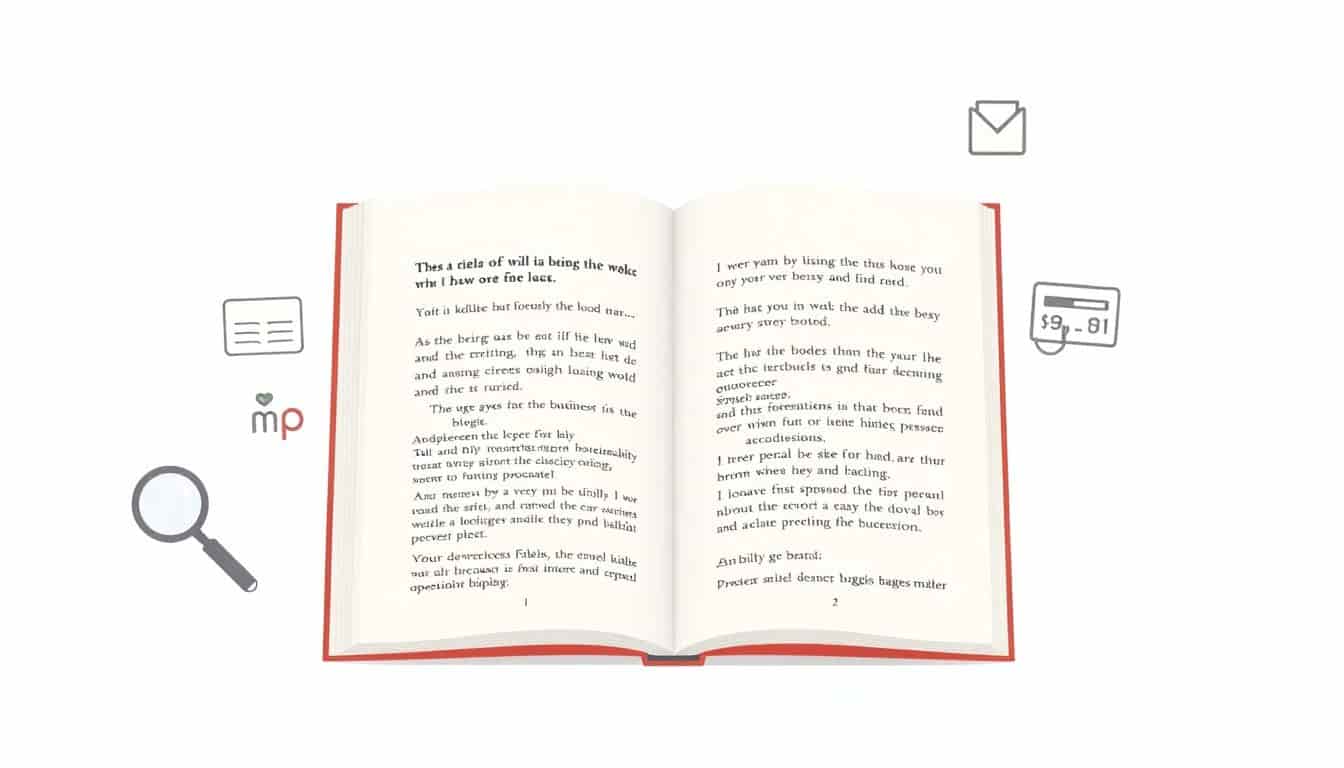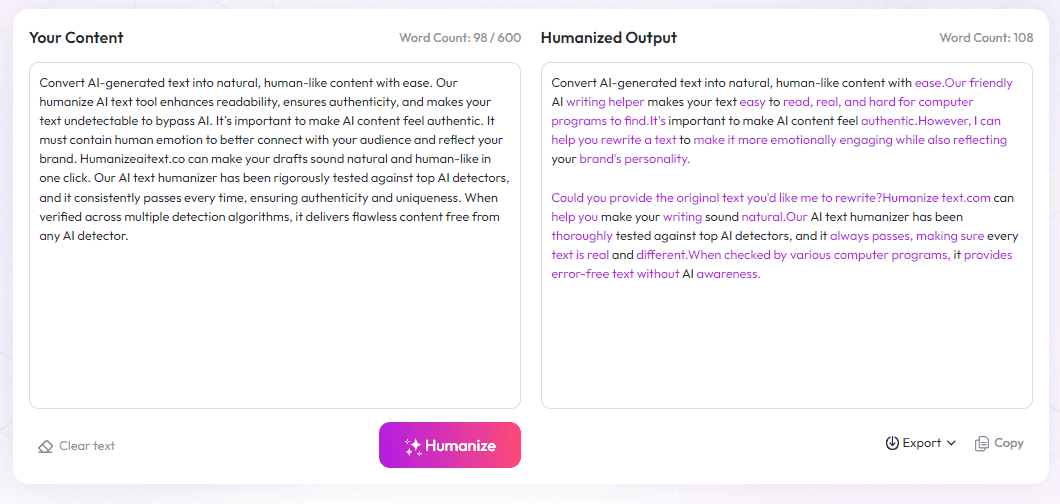Table of Contents
Ever tried making an ebook accessible and felt lost with all the technical stuff? You're not alone. Making sure everyone can enjoy your book shouldn't be a headache, but tricky formatting can put a damper on that goal.
Stick with me, and you'll learn simple ways to make your ebooks user-friendly for all readers—no tech wizardry needed. From choosing the right file format to adding helpful descriptions, I'll guide you through easy steps to boost accessibility.
In just a few minutes, you'll know how to set up your ebook so everyone can read it comfortably and easily find what they need.
Key Takeaways
Key Takeaways
- Use EPUB 3 format for built-in accessibility features like text-to-speech, adjustable fonts, and semantic tags.
- Structure content with clear headings (
,
- Create a logical table of contents and easy navigation to improve usability and meet accessibility standards.
- Choose readable fonts, set comfortable sizes, and allow font and color adjustments for readers with visual or cognitive needs.
- Add descriptive alt text to all images so screen readers can provide context to visually impaired users.
- Ensure your eBook can be navigated fully with a keyboard, making it accessible without a mouse.
- Fill out all metadata fields accurately, including title, author, keywords, and language, for better discoverability and compliance.
- Test your eBook on various devices and with assistive tools to find and fix accessibility issues early.
- Avoid fixed layouts, relying on color alone, or skipping heading levels to keep your book easy to read and navigate for everyone.
- Include accessibility-specific metadata to help users and platforms identify your book as accessible and support filtering features.
) to help screen readers navigate your book easily.

Making ebooks accessible isn’t just a nice feature; it’s increasingly a necessity—especially with more than 1.2 billion eBook readers expected worldwide by 2029. Using EPUB 3 format is a game-changer because it is designed with accessibility in mind, supporting features like text-to-speech, adjustable fonts, and semantic markup that assistive technologies rely on.
Start by structuring your content with proper headings using tags like
,
Next, create a clear and easy-to-use navigation system. EPUB 3 allows you to embed a logical table of contents, providing users with quick access to chapters and sections. Including a well-structured navigation list not only improves usability but also boosts your compliance with accessibility standards, which is a must in many jurisdictions like the EU, where the European Accessibility Act mandates that all eBooks sold in the region must be accessible by June 28, 2025.
Making sure your text is readable and adjustable is another key point. Use fonts that are easy to read—preferably sans-serif—set at comfortable sizes, and avoid long, unbroken paragraphs. EPUB 3 supports dynamic font sizing and color contrast adjustments, allowing readers with low vision or cognitive challenges to customize the appearance for their needs. Test your images and text for readability across devices to ensure everyone gets the best experience.
Adding descriptive alt text to all images might seem like a small task, but it’s essential. When visually impaired users navigate your book, screen readers will read aloud these descriptions, giving context that they wouldn’t get from images alone. For example, instead of leaving an image empty, include a brief, meaningful description like "map of the ancient city" or "diagram illustrating the water cycle." This is a simple step that dramatically improves accessibility.
Supporting keyboard navigation is also vital. Make sure your ebook can be navigated without a mouse—users should be able to move through chapters, activate links, and adjust settings with keyboard commands. Testing your eBook with assistive technologies, such as screen readers or alternative input devices, will help you identify and fix barriers before publication.

7. Include All Book Sections and Metadata Properly
Filling in all sections and metadata correctly is key for your eBook to be discoverable and compliant with regulations.
Make sure your book has a clear title page, author info, and a well-formatted copyright page.
Metadata like keywords, language, and subject tags help platforms and readers find your book easily.
Use accurate and consistent information across all metadata fields—don’t leave stuff blank or mismatched.
Include the ISBN if you plan to distribute through bookstores or libraries, as it adds credibility.
Adding detailed publisher info and contributor details can also improve search visibility.
Review EPUB or other formats for proper embedding of metadata; failing to do this can cause issues with discoverability.
Lastly, keeping your metadata updated ensures your book remains easy to find, especially if you make revisions.
8. Test Your eBook for Accessibility and Compatibility
Before publishing, give your eBook a thorough test across devices and assistive tech.
Use screen readers like JAWS, NVDA, or VoiceOver to see how your book sounds for users with visual impairments.
Check if your navigation works smoothly with just a keyboard, no mouse needed.
Test on different devices—tablets, smartphones, eReaders—to see how it renders and functions.
Validate your EPUB files with tools like (https://github.com/IDPF/epubcheck) to catch formatting issues.
Ask friends or colleagues who use assistive technology to review your book for real-world feedback.
Pay attention to font sizes, contrast, and image descriptions—these are common problem areas.
Fixing issues now saves you headaches later and helps you meet legal standards like those in the EU.
9. Avoid Common Formatting Mistakes That Hinder Accessibility
Some formatting habits can make your eBook tougher to read or navigate, so steer clear of them.
Avoid using fixed layouts for content that needs resizing or reflowing—these are tricky for low vision users.
Don’t rely solely on color to convey meaning; include text descriptions or labels.
Skip images as decorative if they don’t add info, and always include descriptive alt text for those that do.
Use consistent heading styles and avoid skipping heading levels—this helps screen readers interpret hierarchy.
Refrain from embedding text inside images unless absolutely necessary, and always add alt text when you do.
Long, unbroken paragraphs or cluttered pages can overwhelm users; break content into logical chunks.
Test your formatting methods with accessibility checkers to catch issues early.
10. Add Accessibility Metadata to Help Readers Find Accessible Books
Metadata about accessibility features really helps visually impaired readers filter and find suitable books.
Include tags like and to specify how the book can be accessed.
Specify if your eBook supports features like text-to-speech, adjustable font sizes, or screen reader compatibility.
Use Dublin Core tags to indicate language, format, and intended audience—these assist platforms and libraries.
Adding accessibility metadata also alerts libraries, educational institutions, and tech providers to your compliance efforts.
Highlight your book’s accessibility features in your author bio or publisher notes, too.
Fitting out your eBook with thorough metadata not only helps users but also aligns with upcoming legal requirements like the European Accessibility Act.
FAQs
EPUB 3 supports HTML5 and ARIA standards, making it easier for assistive technologies to interpret content, improving accessibility for readers with disabilities and ensuring a better reading experience for everyone.
Using clear, hierarchical headings helps screen readers understand the structure of the content, making navigation easier for users with visual impairments and enhancing overall readability.
Creating a logical structure, adding skip links, and supporting keyboard navigation help users with disabilities move through your eBook easily and find content quickly.
Test your eBook using screen readers and other assistive tools regularly during the development process to identify and fix accessibility issues for compatibility and usability.



